- Call us: 01444 237070
- Contact Us
- Stores
- Sign In / Register
-
- Back
- Used Cameras
- Used Accessories
- Used Lenses
- Used Video
- Used Film Equipment
- Used Stock Alert
- Used Blank Test
- Sell or Part Exchange
- Used Clearance
- Recently Added Used Equipment
- Park Picks
- All Used Black Friday Deals
- Faulty
- Trade-In
- Blog
- New in
- Call us
- Contact us
- Stores
- Sign in
- Categories
- Tips & Inspiration
- Reviews
- News
- Events
- Features
- Buying Guides
- Competitions
How To Take Great Firework Photos
Learn how to take great photos of fireworks this year at Bonfire Night or Firework Displays on November 5th - Low light photography tips.
Halloween is over, the shops have started stocking Christmas gifts, and it's dark at 5pm. That can only mean one thing - it's bonfire night soon!
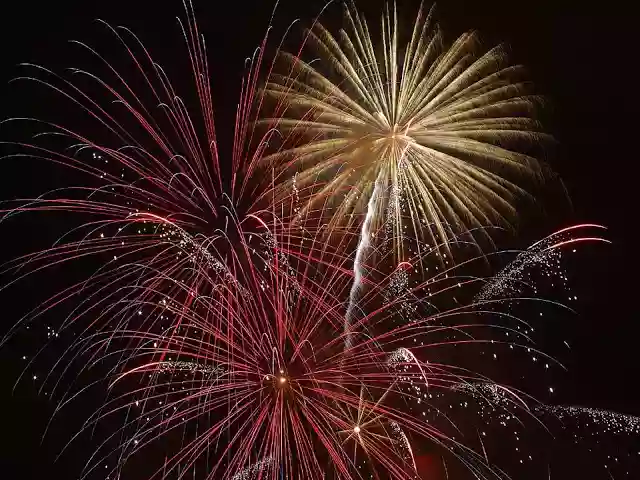
Unless you’re heading to a mid-week firework display, I imagine you’ll be heading out this weekend, so we’ve put together a few tips on how to take photos of fireworks so you can take your camera along and hopefully capture some excellent firework photos.
Fireworks can be a difficult subject to shoot, but a few camera accessories and a bit of forward planning you’ll be able to capture epic fireworks photos on the night.
Aim to shoot your images as early in the display as possible, before the inevitable smoke and haze builds up as the show goes on and obscures your view.
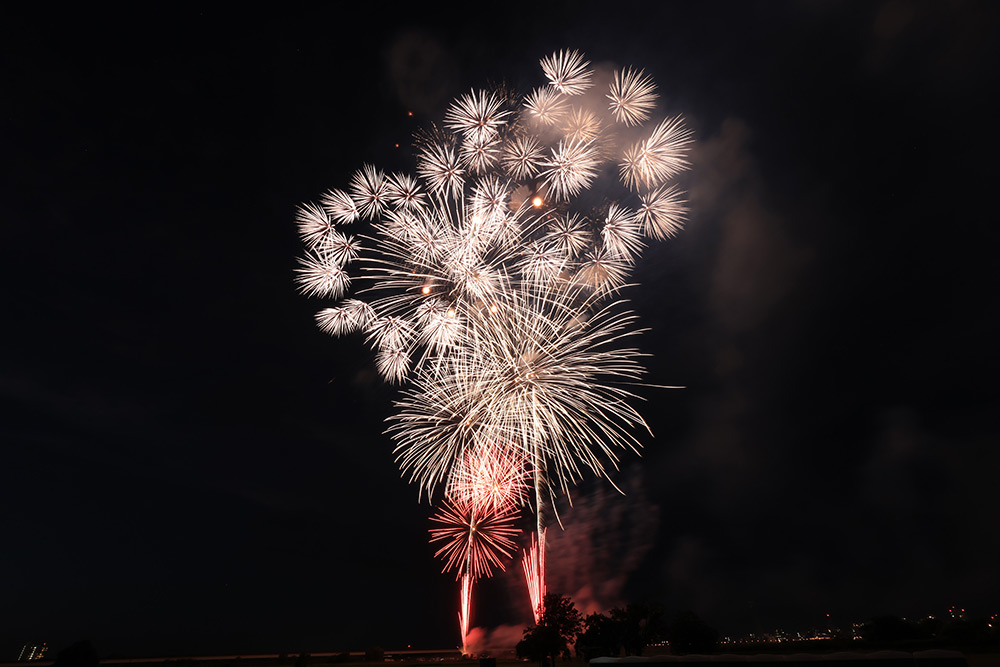
Sample fireworks taken with Canon EOS R7 and Canon RF-S 10-18mm F/4.5-6.3 IS USM Lens @10mm. Camera settings: 1024 seconds. f/14. ISO 200
What Kit Do You Need To Take Awesome Firework Photos?
Firstly, you’ll probably want a compact tripod or monopod to take firework photos. A tripod will enable you to use a longer exposure time and allow the firework bursts to expose on to your image and build up gradually.
Set your camera up so you have an unrestricted viewpoint - avoid bright areas in your set-up - it's not a good idea to have a bonfire in the foreground for instance as this will 'burn out' in your shots, but it can be nice to have some objects that will silhouette in your images like trees or even people back-lit by the fireworks.
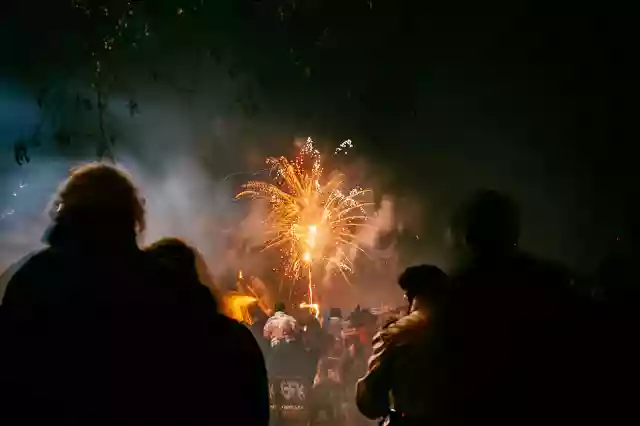
Try to avoid shooting in crowds for a couple of reasons: you don’t want someone inadvertently knocking your tripod while you’re shooting a long exposure, and you’ll find it tricky to get a clear shot of the fireworks. Don’t forget to take a torch with you so you see the ground you’re setting up on and the settings on your camera, unless you have a backlit control panel or lit up buttons.
A remote cord or camera remote control is useful too. These mean you don’t have to touch the camera to set it up or fire the shutter so you’ll get a smooth exposure without any hand-wobble. You can use the self-timer on your camera, but this makes it harder to judge when to fire the shutter so I’d recommend using a remote release if you can.
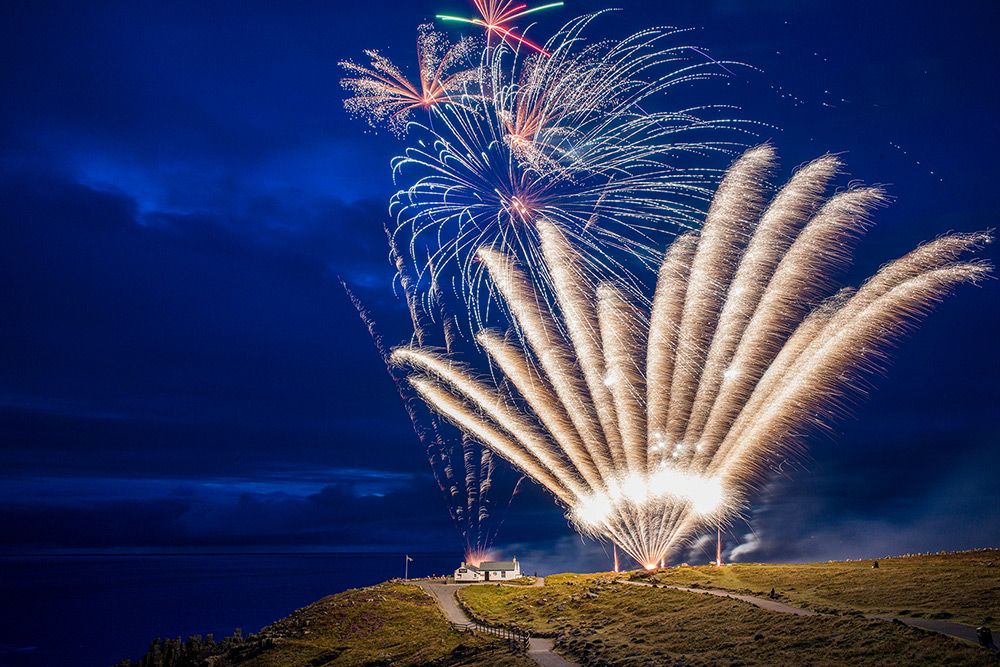
Sample fireworks photo captured with Leica Summicron-M 28mm F/2 ASPH Lens Black Anodised, camera settings unavailable
What Settings Do You Need For Great Firework Photos?
I suggest using an ISO setting of about 100 and an aperture of around f/8 to capture great fireworks photos. A standard zoom lens or around 50mm equivalent will be ideal as it gives a natural field of view.
Manual focus set to infinity is the way to go for focusing and set your white balance to cloudy for a slight lift in warmth for the final image.
Set the camera to Bulb mode or even better if it has a T setting. In Bulb mode, the camera shutter remains open for as long as the shutter button is held down - as soon as you release the button the shutter closes and the exposure ends. In T mode, the shutter opens when you press the release but then remains open until you press it again.
To summarise, the best camera settings for fireworks are:
- An ISO of around ISO 100
- Shoot at a standard focal width of around 50mm
- Set focus to infinity
- White balance should be set to cloudy
- Shoot in either Bulb mode or T-mode
- Trigger the shutter with a remote release and use a tripod
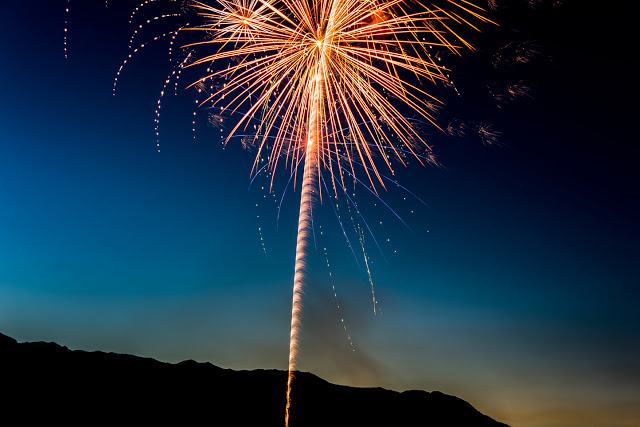
How Do You Know When To Shoot?
Aim your camera at where the fireworks are bursting and try a shot for around 30 seconds to begin with, that should be enough to record one or two bursts. Check the image and make sure it is not over or underexposed. If it’s all OK then you can open the shutter again, but this time use a piece of black card to cover the lens - only remove the card when the firework bursts then immediately cover the lens again. Repeat this for 3-4 bursts and then close the shutter - you have now recorded several bursts on one frame. Check the image again and if all is OK repeat for the rest of the display.
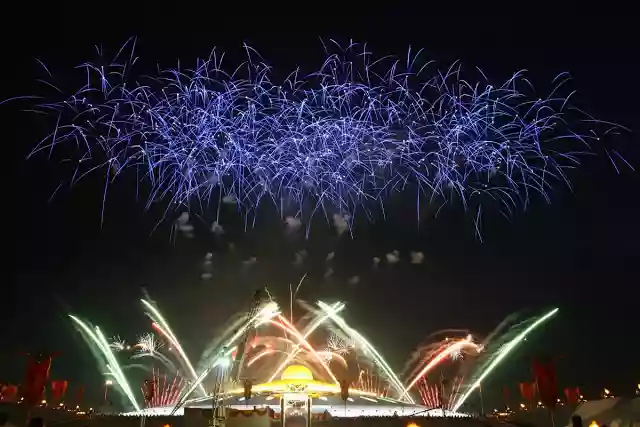
If your image is over-exposed, try stopping the aperture down to f/11 - if underexposed either open the lens up to f/5.6 or increase the ISO to 200.
If you are fortunate enough to own a Panasonic or OM System Micro Four Thirds camera with LiveBulb, you can open the shutter in this mode and watch on the rear screen as the image builds up. Once you are happy with the image, end the exposure. This takes a lot of the guesswork out of shooting this type of image.
What Else Can You Shoot At Bonfire And Firework Displays?
Bonfire and firework displays are normally accompanied by sparklers, so while you have your camera and tripod why not try some creative shots by 'painting with light'.
Set the camera up on bulb mode as before and get some friends and family to ‘draw’ in the air with sparklers, or even torches, while the shutter is open. For an even better effect, get them to twirl around with a sparkler in each hand.
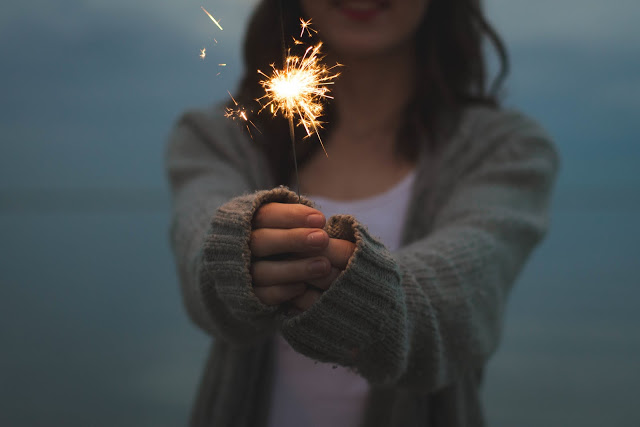
If you are at a display with a large bonfire there will be opportunities to get some atmospheric shots of people illuminated by the light of the fire and again back-lit shots with silhouetted people are very effective too.
Safety First: Always use gloves when handling sparklers, never get too close to the bonfire, and follow all safety advice given by the event organisers. No photo is worth sacrificing your safety.
In summary, photographing fireworks is a captivating blend of art and camera technique. With the right camera settings, tripod stability, and a keen eye for timing and composition, you can transform explosive bursts of light into breathtaking images.
Whether you're capturing a dazzling citywide display or a small backyard show, the principles remain the same. So, remember to prepare in advance, experiment with different settings, and frame your shots creatively.
With practice and patience, you'll master the art of fireworks photography, turning fleeting moments of brilliance into lasting visual memories that shine bright in your portfolio.
Visit our camera accessories to pick up everything discussed in our photo tips and tricks guide, and if you don’t have a tripod already, choose one from our vast range from all the best brands in the market.
Share this post:
By Park Cameras on 02/11/2023

Trade in your old equipment
Fast and easy trade in service ensures your old gear is collected efficiently and you are paid quickly! It's very simple to trade in your unwanted photography gear. Just head over to our dedicated Sell or Part Exchange page, fill out the details, and we'll get back to you with an offer for your old gear. Take the cash, or put it towards the cost of your new gear. It's up to you! Find out more
sign up to the newsletter
Keep up to date on the latest photography news, events and offers. Sign up now
